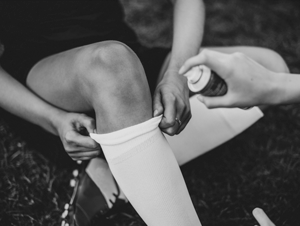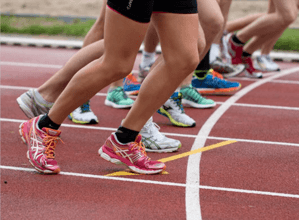Introduction
Dr. Loren Fishman has teamed up with Ellen Saltonstall, a certified Anusara Yoga instructor, to write Yoga for Arthritis: The Complete Guide. The 2 have also collaborated on Yoga for Osteoporosis: the Complete Guide.
Dr. Fishman serves as Medical Director of Manhattan Physical Medicine and Rehabilitation in New York City. (For more information visit ManhattanPhysicalMedicine.com.) He has authored or co-authored 10 books, written 90 academic articles, and is recognized as a pioneer in the treatment of inflammation and pain. He is recognized for his research in scoliosis, piriformis syndrome, osteoporosis, rotator cuff syndrome, back pain and arthritis.
He serves as a member of the staff at Columbia College of Physicians and Surgeons, and is a past president of the New York Society of Physical Medicine and Rehabilitation. He has written 5 separate books regarding the healing effects of yoga on certain medical conditions. He has recommended yoga to his patients for 35 years, and is also a practicing yogi. He spent one year training with legendary yogi BKS Iyengar in India.
Ellen Saltonstall learned about human anatomy and physical therapy as a result of her early career in dance. She found yoga to be an effective form of physical and mental therapy, and went on to receive her RYT (registered yoga training) certification. She now teaches nationally and abroad, and helps develop certification guidelines and curriculum for Anusara Yoga.
The Idea
The foundation for this book began years ago. Dr. Fishman traveled to India after he received his bachelors degree in Philosophy at Christ Church, Oxford in the United Kingdom. He studied several different alternative healing methods, and found yoga to be the perfect companion to traditional Western medicine for the relief of pain from several chronic conditions.
Ellen Saltonstall discovered yoga as a way to treat the pain she experienced as a dancer. She began studying and practicing yoga, long before she and Dr. Fishman decided to co-author Yoga for Arthritis: The Complete Guide. Saltonstall went on to offer anatomy and therapy trainings, teacher trainings, and private classes and yoga sessions. While offering tele-seminars on multiple therapeutic studies through her YogaTherapyWeb.com website she met Dr. Fishman, and the idea for Yoga for Arthritis was born.
How the Book Is Laid Out
Yoga for Arthritis: The Complete Guide is available in paperback form or as a Kindle digital download for immediate consumption. This review was based on the Kindle e-book, however, the information is the same for both publishing formats.
After a Dedication aimed at yoga teachers, the book begins with a Table of Contents. This moves into a handy List of Illustrations. While illustrations to help you correctly form particular yoga poses are contained throughout the book, these 21 illustrations show different physiological alignments and body parts. You are also shown how Anusara yoga principles help properly realign different joints that have been knocked out of whack by arthritis.
Next up is a List of Tables. These 10 tables familiarize you with the different types of motion and intensities of action that take place in joints and other areas affected by arthritis. The authors thank their teachers, such as BKS Iyengar, John Friend and Others, in an Acknowledgments section. You are then taken to the Introduction of Yoga for Arthritis.
Early on in the introduction you learn that "Arthritis restricts movement, yoga increases your range of motion – these two were made for each other." Gravity couples with the way the human body is made to put pounding, flexing pressure on joints, ligaments and muscles. Yoga has been proven to actually "improve the microenvironment of the cartilage and elastic parts of structures they protect", thus increasing flexibility and stability, and decreasing pain.
Chapter 1, simply titled Arthritis, assumes nothing, and begins by asking the question What Is Arthritis?. You learn here that arthritis is literally translated as "joint inflammation". You also get an understanding of how healthy joints work, and the way that arthritis works on your more than 140 joints to limit flexibility and range of motion, and cause pain.
This chapter contains an informative section titled What Goes Wrong in Osteoarthritis?. Osteoarthritis is the most common forms of arthritis, a broad term used to refer to the more than 100 different types of arthritic conditions. It most frequently accompanies aging, but can also arise from obesity or injury to your joints.
Osteoarthritis often increases in severity over years. It affects joints by causing pain and a shorter range of motion, but doesn't produce physical sickness or fatigue like some types of arthritis. Basically, this causes because cartilage gradually breaks down. This can lead to problems performing simple actions such as combing your hair, gripping objects, walking or simply getting dressed.
Chapters 2 through 5 are concerned with the explanation of exactly what yoga is. You get to know the Physiology of Yoga, how performing certain physical postures and poses actually works to deliver specific health rewards and pain relief. You are also shown why asanas (yoga poses) need to be performed in a very particular way, as well as some tips on how to hold each pose correctly.
Chapters 6 through 13 address individual body parts where arthritis pain commonly attacks. In each of these chapters specific yoga poses and strategies are discussed to lessen arthritic symptoms. The chapters are titled as follows:
Chapter 6 – The shoulders
Chapter 7 – The hips
Chapter 8 – The lumbar spine
Chapter 9 – The cervical spine
Chapter 10 – The knees
Chapter 11 – The sacroiliac joints
Chapter 12 – The wrists and hands
Chapter 13 – The feet and ankles
Chapter 14 addresses how yoga can be used to treat Scoliosis effectively as a pain relief therapy. Chapter 15 is titled Ankylosing Spondylitis, an inflammatory disease which causes separate spinal vertebrae to fuse together. This makes your spine less flexible than normal, and can result in a "hunched over" posture. This chapter is dedicated to practicing specific yoga poses to help add flexibility to your spine if you suffer from this debilitating condition.
Appendices include an Alphabetical Index of Poses, Poses by Chapter and Alignment Principles from Anusara Yoga. These sections help you quickly locate particular poses previously mentioned in the book. The book closes with a Glossary, a Notes section and a list of Resources for further study.
Who Benefits from Yoga for Arthritis: The Complete Guide?
If you are one of the 350 million people in the world that has some form of arthritis, this book offers hope. It can help whether you are young or old, male or female, and regardless of your culture or religious beliefs. It serves as a simple and easy to use guide for arthritis treatment. Specific yoga poses are revealed which have been proven to effectively treat, and lessen, the painful symptoms brought on by different forms of arthritis. If you or someone you know suffers from this debilitating condition that robs your independence and mobility, you should consider picking up a copy of Yoga for Arthritis: The Complete Guide.
Strangely enough, you don't necessarily have to suffer from arthritis to benefit from this book. Yoga has been used in the East for centuries as a pain-relief tool. Inflammation is at the heart and soul of many chronic diseases. In many cases, inflammation can be increased, or even caused, by stress. Yoga is an excellent stress relief tool, so it makes the perfect natural pain-relief therapy as well. Whatever your age, arthritis or not, this yoga-based book offers pain-relief and mental health benefits.



 OA usually affects the knees and hips. RA usually affects wrists and hands, and ankles and feet. The disease also tends to be symmetrical, that is, affect both sides of the body, such as both hands at the same time.
OA usually affects the knees and hips. RA usually affects wrists and hands, and ankles and feet. The disease also tends to be symmetrical, that is, affect both sides of the body, such as both hands at the same time.